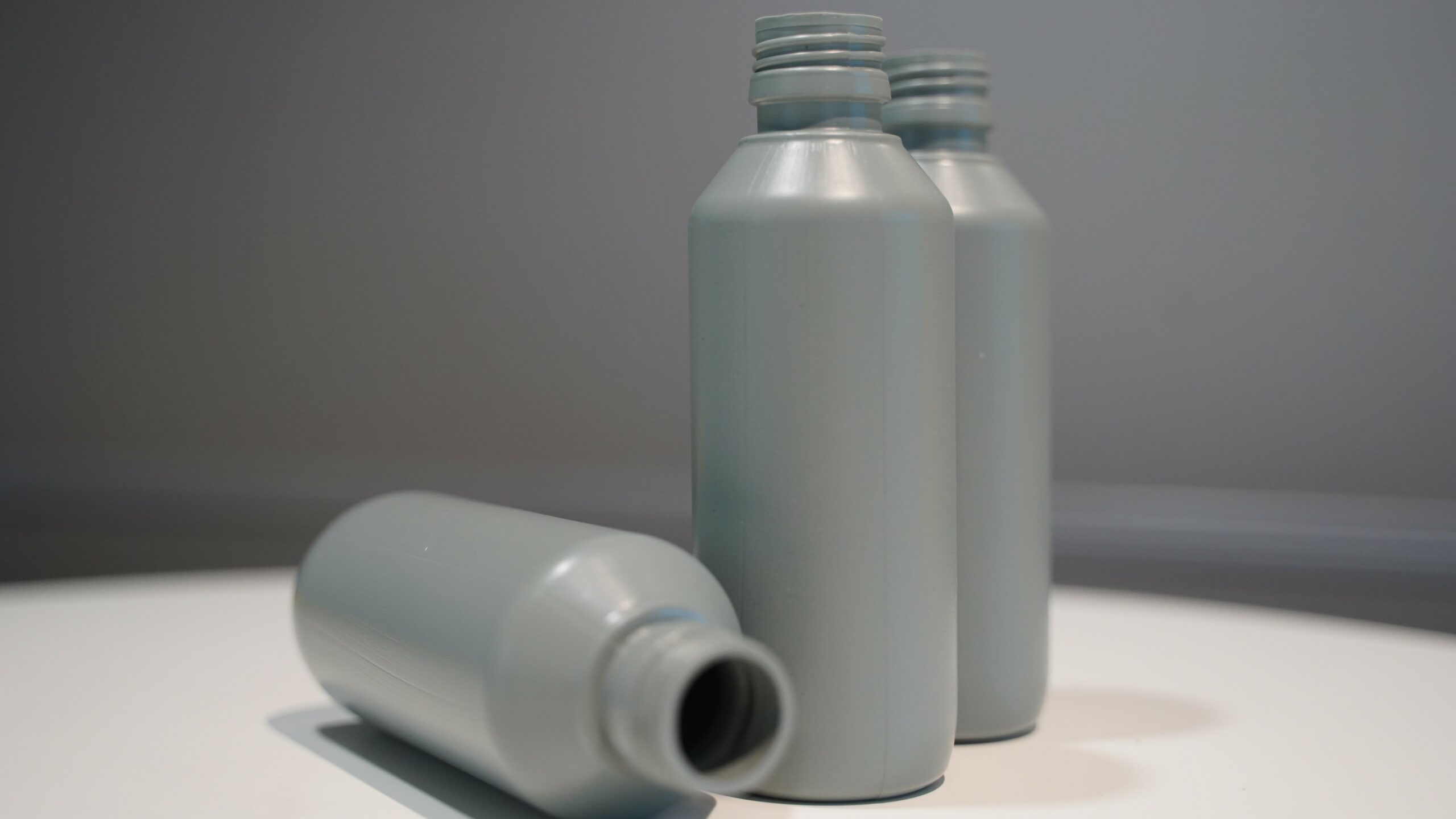ITENE produces detergent packaging by advanced decontamination processes of recycled polyolefins
In the ReciPOL project, financed by IVACE+i with Feder funds, the research centre has evaluated the efficiency of different routes for the decontamination of post-consumer contaminated polyolefins for the manufacture of new packaging.

The ITENE research centre has developed advanced processes for the decontamination of recycled polyolefins, specifically recycled high-density polyethylene (HDPE), which have allowed it to achieve detergent containers through extrusion blow moulding of the same in different sizes.
The research has been carried out between June 2023 and 2024 in the framework of the ReciPOL project, funded by the Valencian Institute of Business Competitiveness (IVACE+i), and has focused on obtaining high quality recycled materials.
The head of the project at ITENE, Félix González, explained that “although the post-consumer plastic decontamination processes developed are usually focused on polyethylene terephthalate (PET), the elimination of contaminants in polyolefins is more complex due to their greater internal migration and low thermal stability, which generates degradation products”. “These difficulties are aggravated by recycling cycles that involve greater degradation and contact with other contaminants, which can limit their application in sectors with higher quality requirements,” the researcher said.
Therefore, this project has sought to obtain new technologies for the decontamination of recycled polyolefins to increase recycling rates and promote their use in applications with higher quality requirements. Specifically, work has focused on the conditioning, pre-treatment, decontamination and transformation of polyolefins from waste currently destined for low-value applications.
Analysis of contaminants and controlled contamination
For this purpose, a post-consumer polyolefin contaminant analysis was carried out. This allowed the most critical ones to be selected to see what challenges the project faced. Furthermore, through this selection and the optimisation of the controlled contamination process (challenge test), it was possible to measure the effectiveness of the pretreatment and decontamination processes that were developed in the following stages.
Subsequently, work was carried out on the development of conditioning and decontamination processes for polyolefins. Firstly, a pre-treatment process was carried out which, once optimised and synergistically aligned with the subsequent decontamination processes, three different technologies were tested: water vapour, ozone and supercritical CO2. Water vapour was selected as the technology that met both good effectiveness in removing contaminants and feasibility, both economically and technically, of scaling up this process. It is true that supercritical CO2 presented a higher efficiency, but due to the usually used conditions of hyperbaric pressures and high temperatures that achieve this condition, the water vapour technology was chosen.
Subsequently, the selected technology was evaluated and scaled up in a pilot steam decontamination unit designed at ITENE to scale up the process and serve as a prototype for its validation and to bring it closer to an industrial scale.
Likewise, additives were selected to improve the processability and properties of the recycled materials, for which different formulations were designed to optimise the decontamination of the polyolefins and the properties of the packaging. Thus, the formulations with the best results were validated by means of hollow-body blown extrusion for the subsequent production of bottles. In addition, it was found that the flowability of the materials obtained was adequate and that the tensile strength was similar to that of the virgin material, although they were more rigid. Finally, the most promising formulation was selected for industrial validation.

